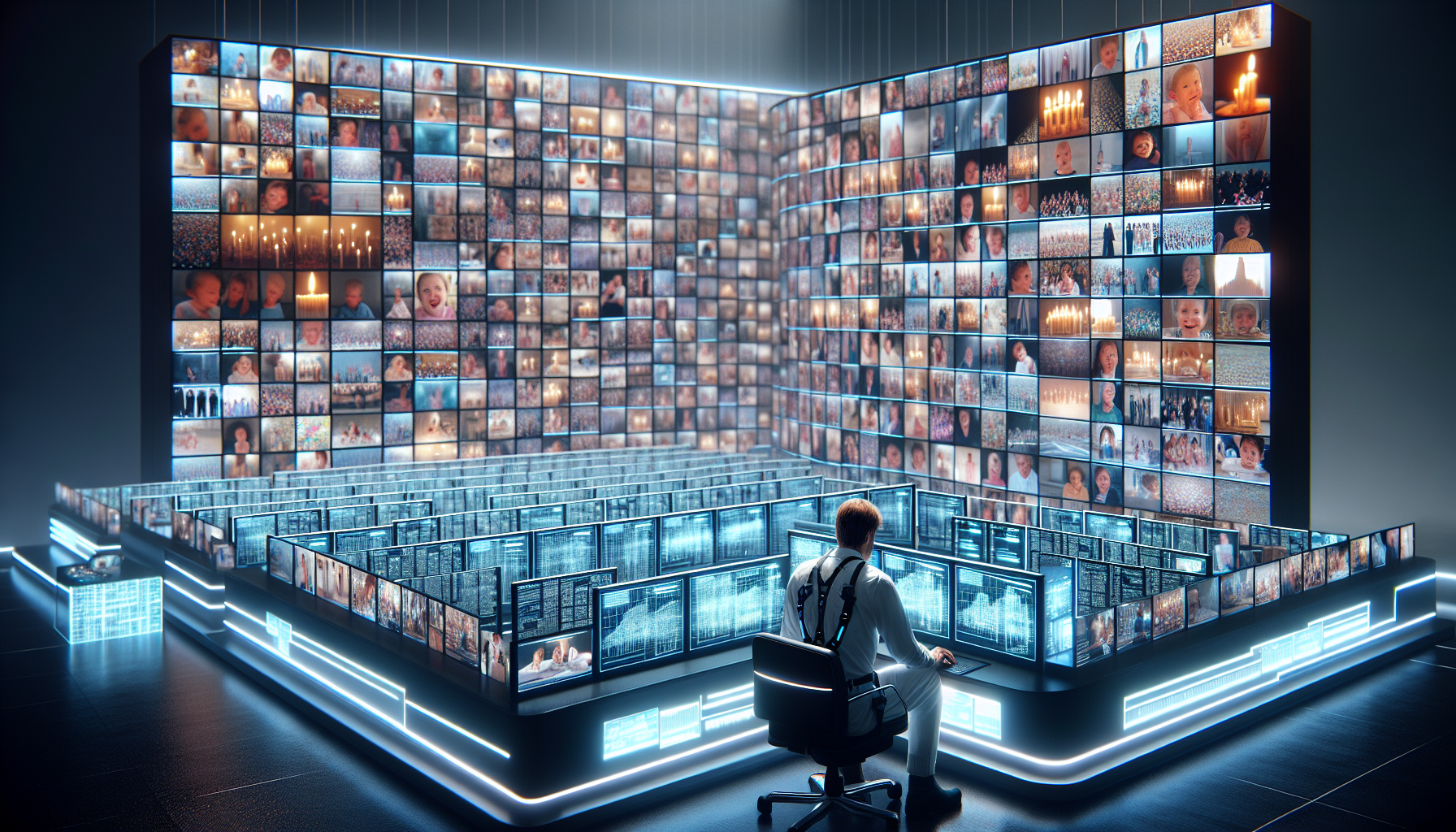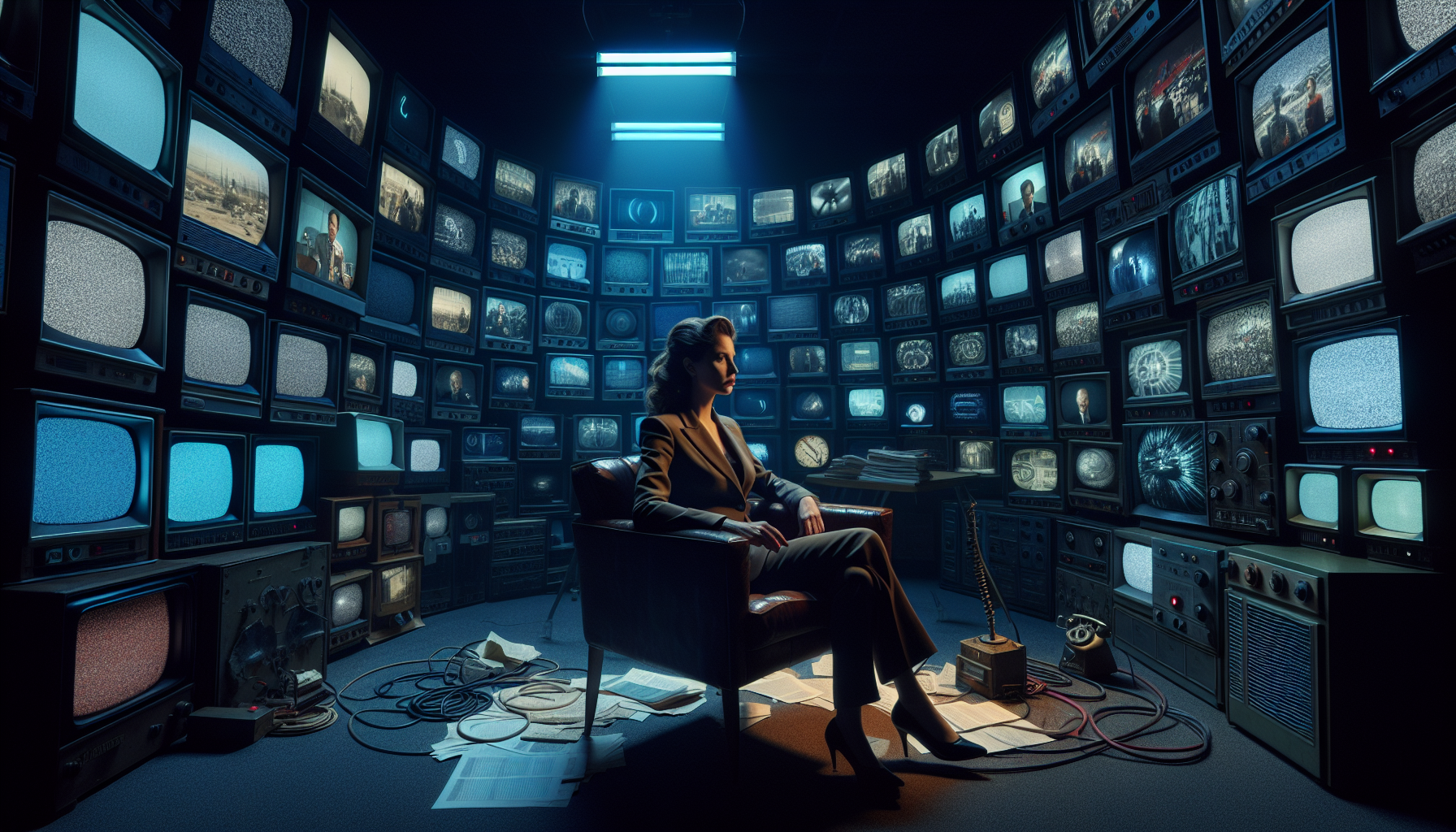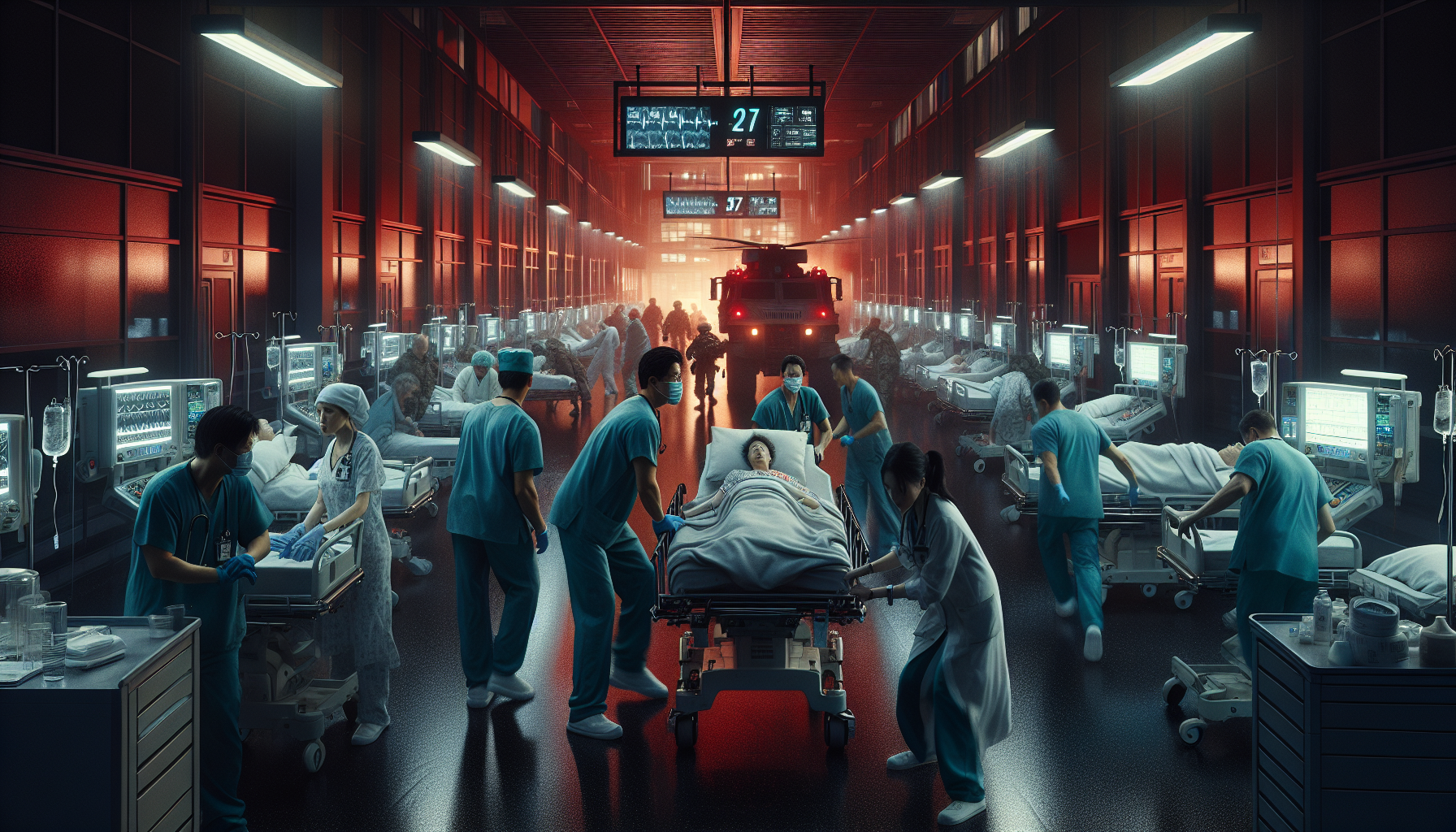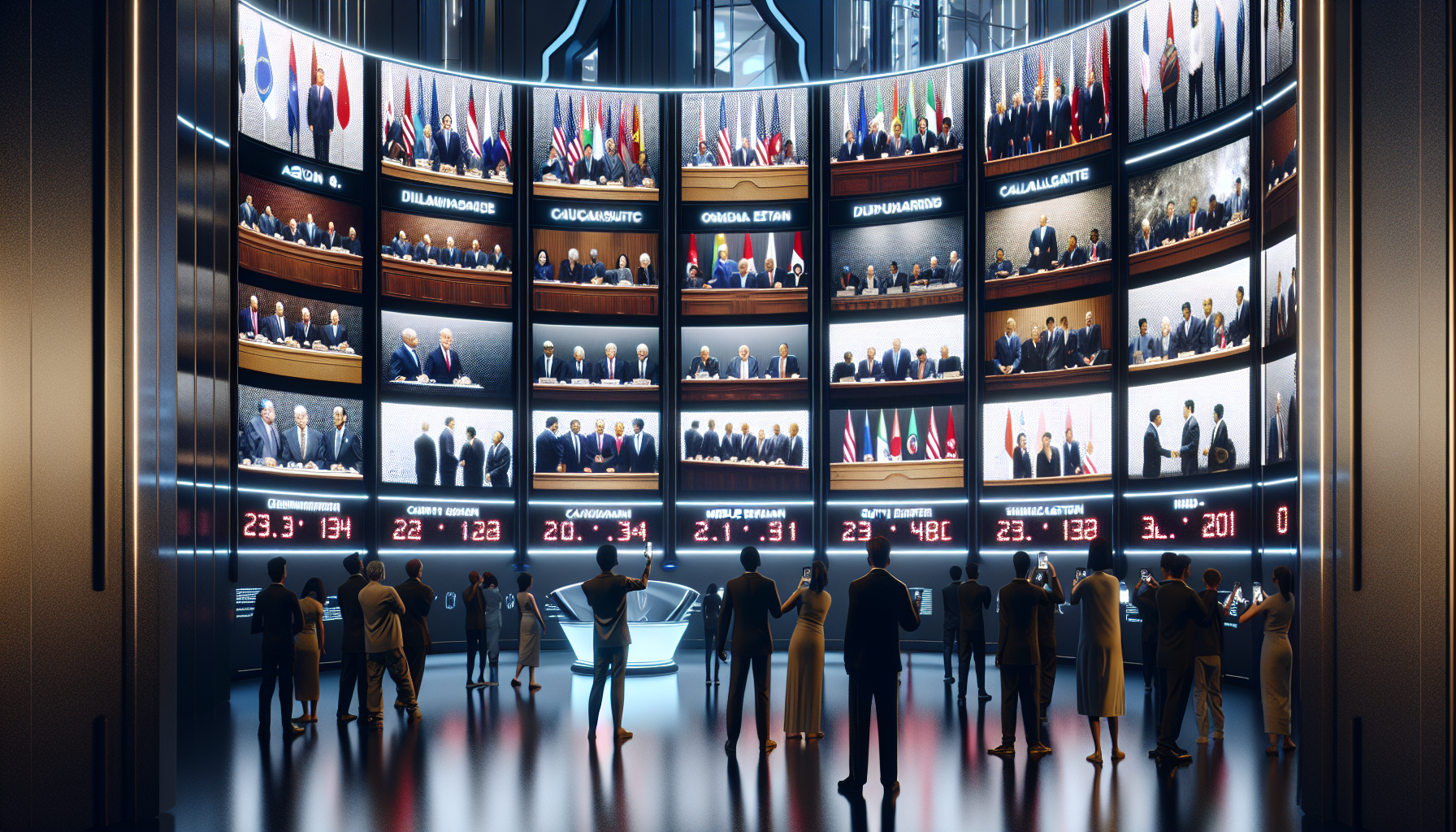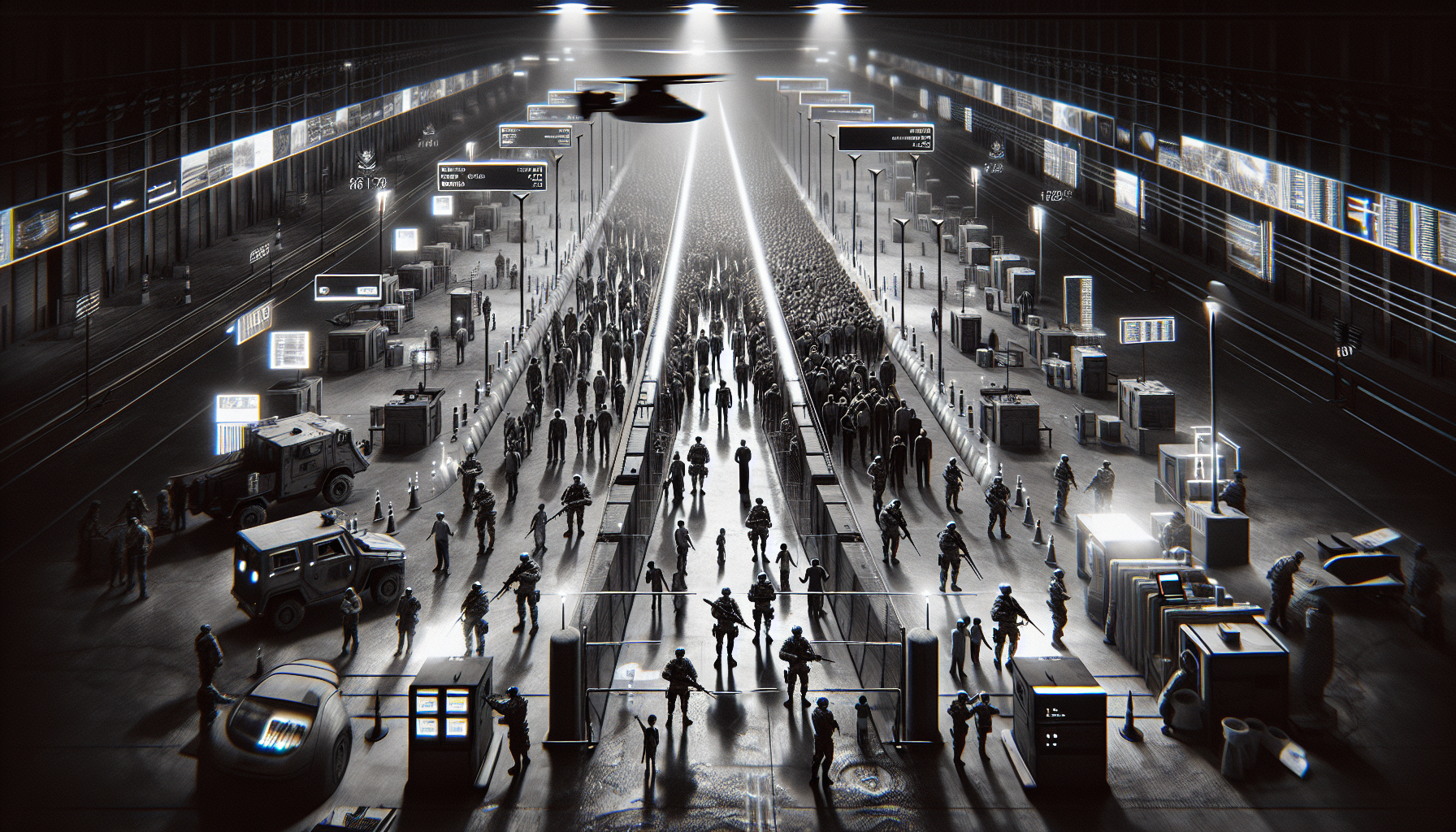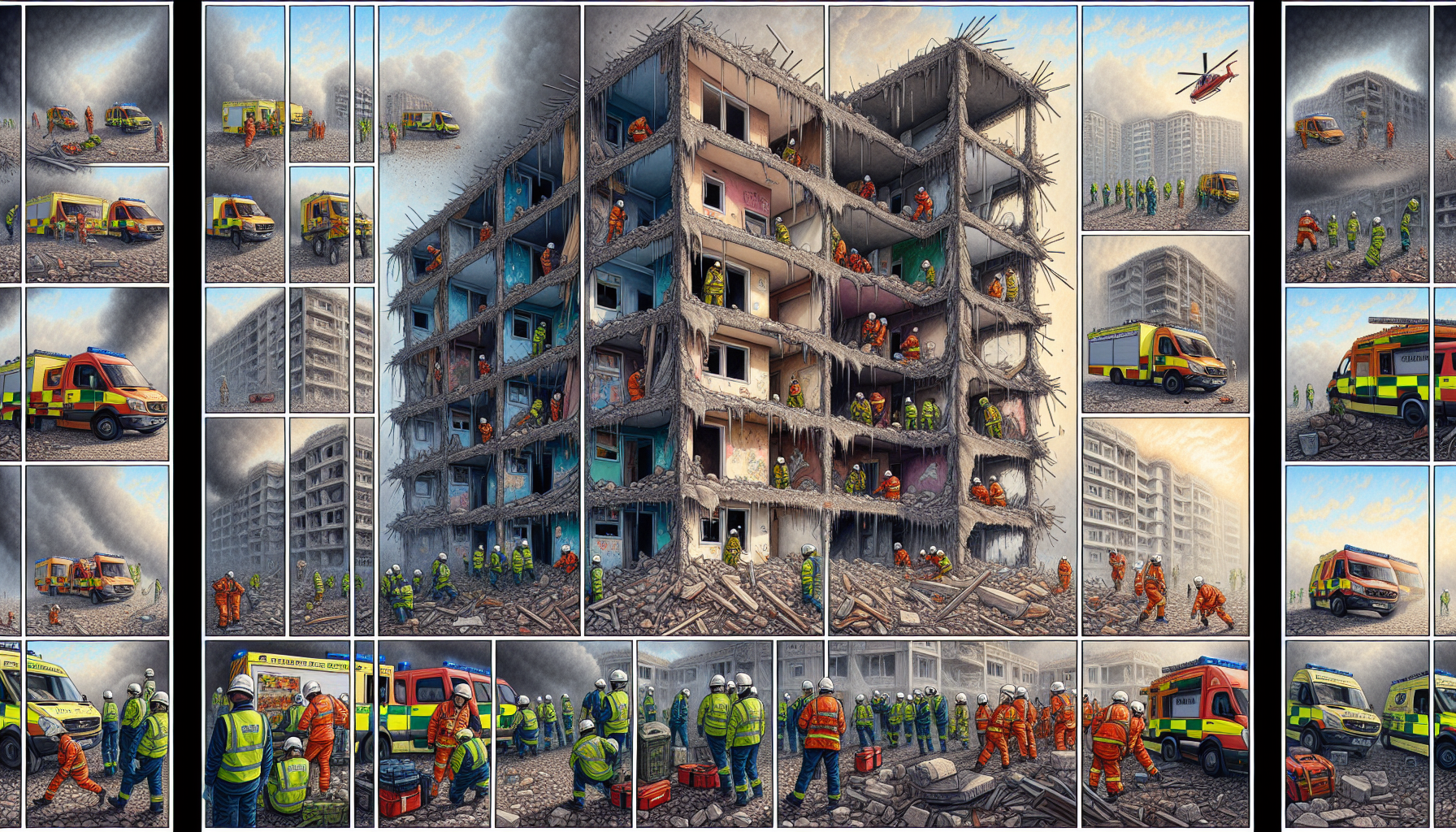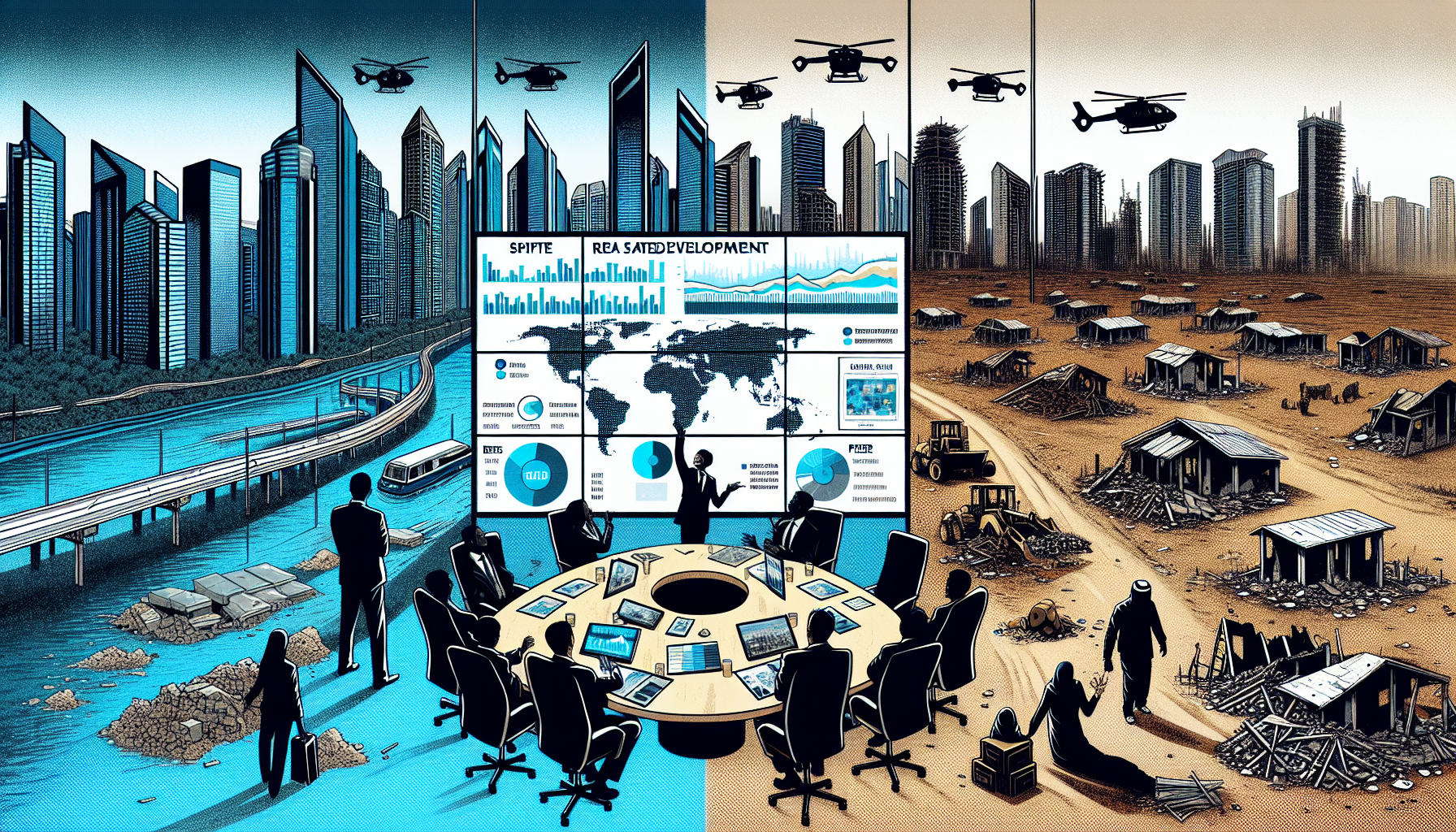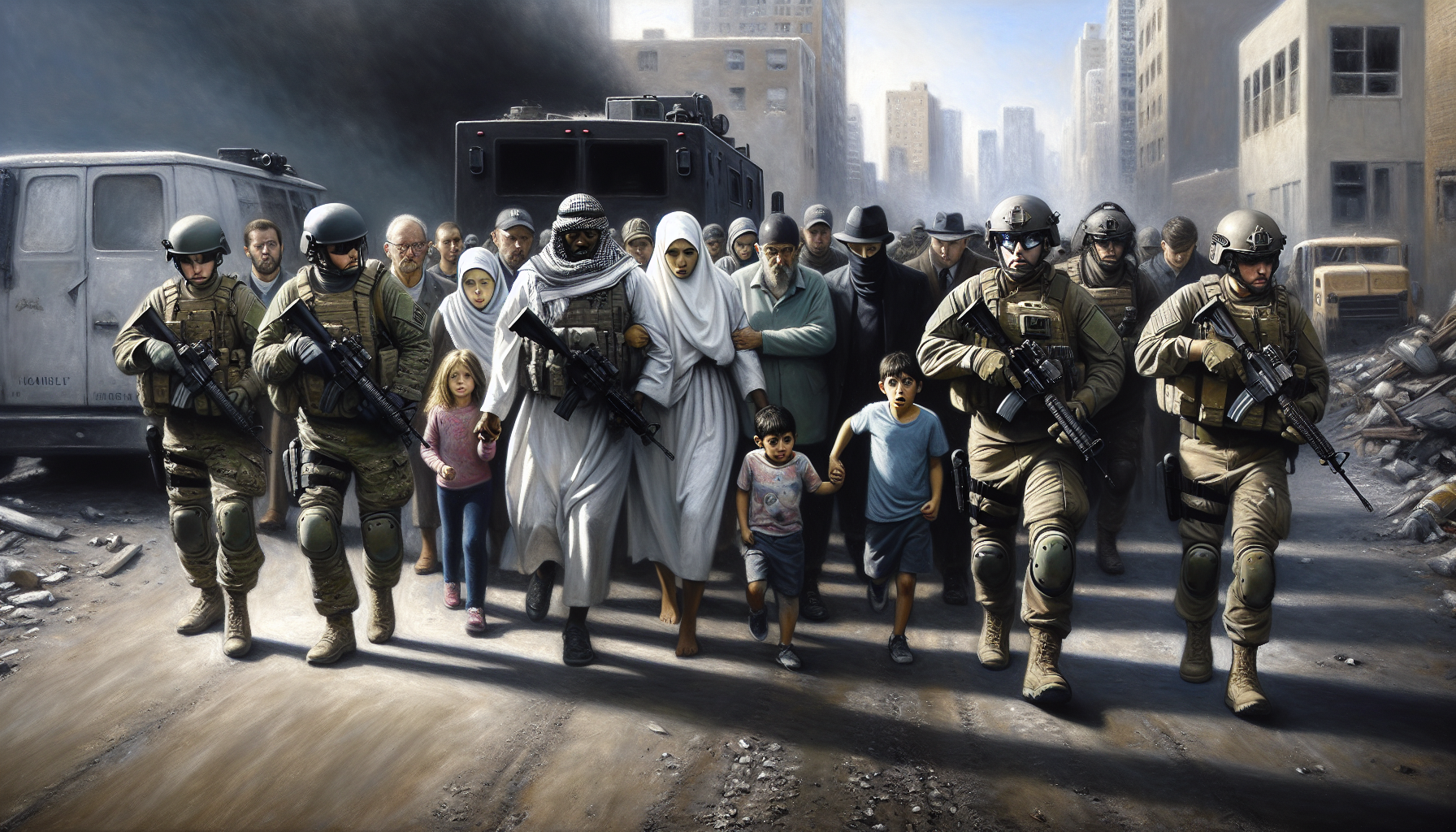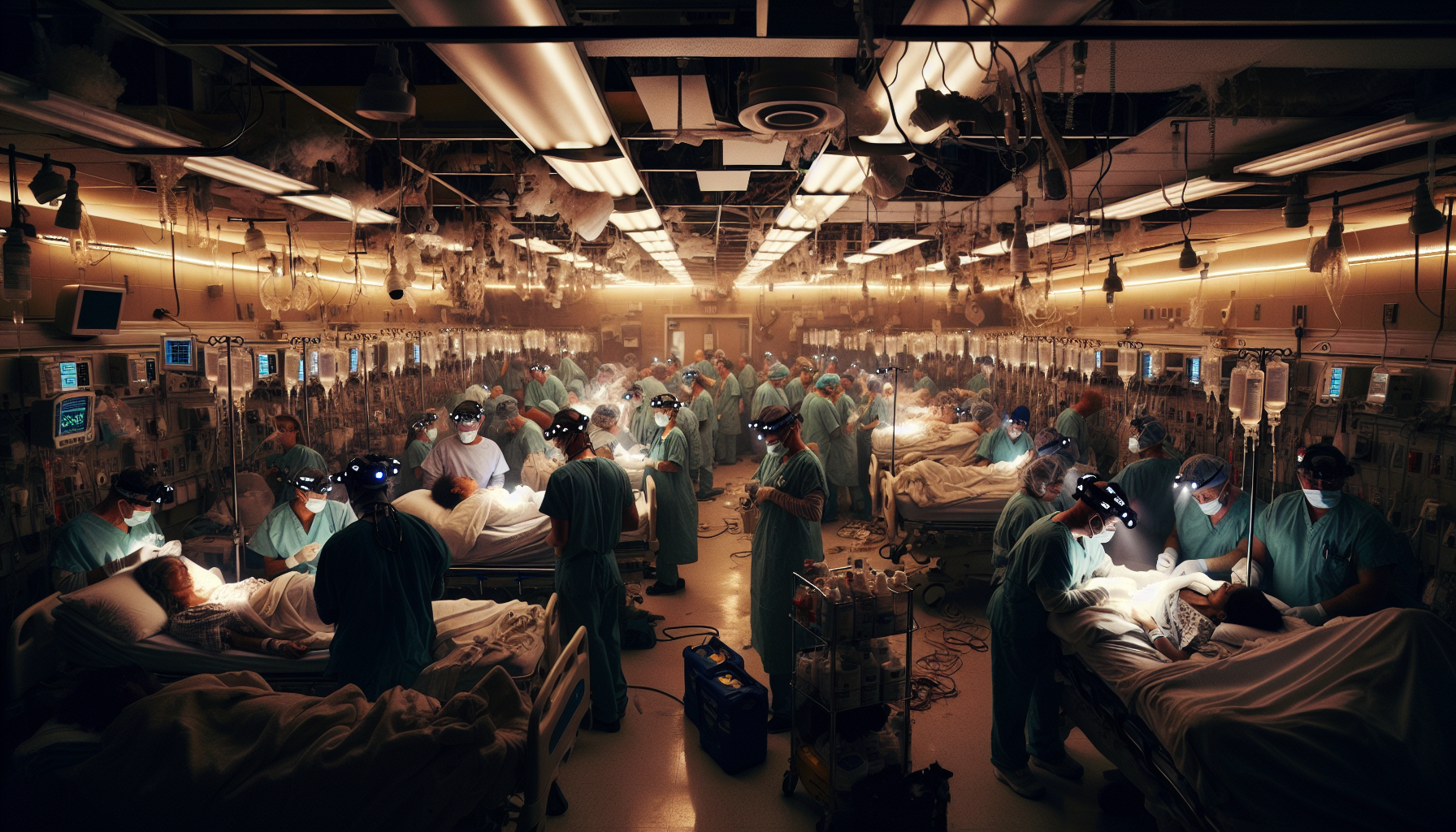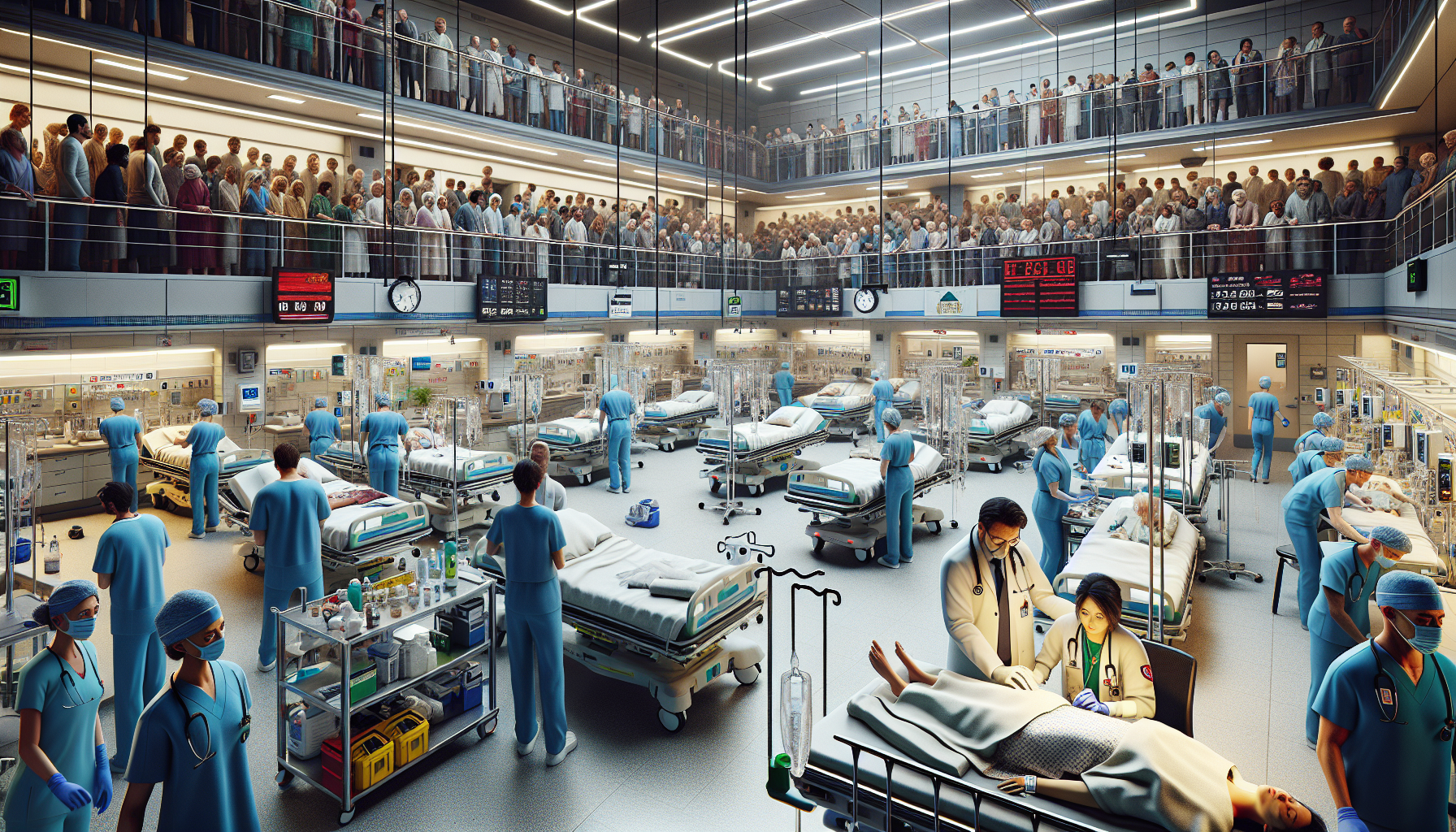Truth's Last Stand: A World Unfiltered
What happened on Earth...on October 23, 2024
-
The Human Calculus
A massive memorial wall shows 43,000 individual photographs transforming into numbers. Each photo tells a story - a child's birthday, a family dinner, a graduation ceremony - before dissolving into statistics. In the foreground, a data archivist meticulously records each story, refusing to let them become mere numbers. The scene emphasizes that among the 43,000 killed are 17,000 children, with 100,000 wounded. The wall serves as both memorial and indictment.Archivist thinking: Each number had a name, a story, a future...
-
Shock Doctrine Redux
A documentary-style scene showing Naomi Klein in a traditional interview setting, but behind her, historical footage plays on screens showing patterns of crisis exploitation: from Chile 1973 to Iraq 2003, to current events. The scene connects historical dots of how trauma has been weaponized throughout history to reshape societies. Klein's analysis reveals how current events follow this established playbook of using catastrophe to implement pre-planned agendas.Klein: History doesn't repeat, but it rhymes with terrifying precision
-
Night at Asahel
A stark, realistic depiction of Asahel Hospital during evacuation. Medical staff wheel patients through darkened corridors, their path lit only by emergency lights. The scene captures the raw reality of 350 patients being forced to evacuate under threat, including critical cases and those on life support. Military vehicles are visible through windows, creating long shadows that reach across hospital beds.Nurse: The ICU patients won't survive transport
Doctor: We took an oath to protect life, now we're forced to risk them
-
The Diplomatic Möbius Strip
Blinken's 11 regional visits are depicted as a Möbius strip art installation in a museum of contemporary history. Each scene shows identical diplomatic photoshoots, handshakes, and press conferences, while real-time casualty counters tick upward in the background. Museum visitors walk through, some taking selfies, others weeping. The scene illustrates how diplomatic theater continues while humanitarian crises deepen.Museum Guide: Note how the smiles remain constant while the death toll rises
Child Visitor: But why didn't they stop it?
-
Processing
A straightforward, documentary-style sequence showing the systematic separation of families at checkpoints. The scene is presented through security camera footage, revealing the cold efficiency of the process. Males are directed to separate areas, families are split, and drones monitor compliance. The scene emphasizes the bureaucratic nature of humanitarian crimes. -
18 Days Too Late
A grid of 18 panels, each representing one day rescue workers were prevented from reaching trapped survivors. Each panel shows the same building, progressively crumbling, while rescue workers stand helplessly by. Time stamps tick away in each panel, marking the passage of crucial hours. The final panel shows empty ruins.Rescue Worker thinking: We could hear them getting weaker each day
-
Real Estate Revolution
A split-screen showing settlement expansion plans. One side shows sterile corporate presentations with maps and projections, while the other shows the human impact: displaced families, demolished homes. The scene reveals how Ben-Gvir and Daniela Weiss present ethnic cleansing in corporate PowerPoint aesthetics. Settlement plans are shown as real estate development proposals, complete with before/after visualizations. -
The Human Wall
A straightforward photojournalistic depiction of civilians being used as human shields. The scene uses actual reference imagery, showing armed forces positioning civilians ahead of military operations. No stylization or artistic license is taken to ensure the gravity of the war crime is properly documented. -
Aid Maze
An intricate maze formed by 250,000 stranded aid trucks, viewed from above. Each truck contains specific aid supplies - medicine, food, water - labeled clearly. The maze's walls form bureaucratic terms: 'PENDING', 'DENIED', 'UNDER REVIEW'. At the maze's center, desperate civilians wait. The scene illustrates how bureaucracy becomes a weapon against humanitarian aid. -
Last Lights of Northern Gaza
A realistic depiction of the last functioning hospitals in Northern Gaza. The scene shows medical staff working by generator power, treating patients in overcrowded conditions. 350 patients are shown in various states of medical crisis, while supplies dwindle. The scene maintains journalistic integrity without artistic embellishment. -
Beirut Emergency
A purely documentary sequence at Rafik Hariri University Hospital, showing medical staff treating 57 wounded patients. The scene uses a photojournalistic style to capture the immediate aftermath, including emergency response teams, medical procedures, and family members waiting for news. No artistic interpretation is added to maintain the scene's authenticity. -
60 Voices
A straightforward presentation of 60 House Democrats advocating for media access. Each representative is shown in a simple portrait style with their statement on press freedom. The scene emphasizes the importance of their unified stance without additional artistic interpretation.
